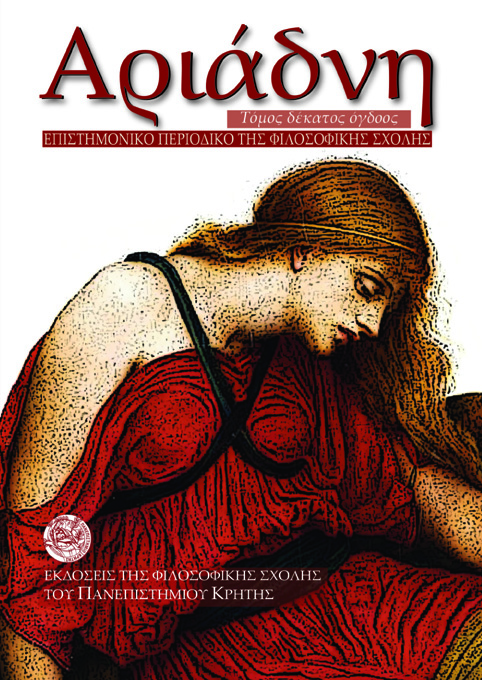Archaeological survey on the island of Dia. Preliminary reports of the 2010 and 2012 seasons
DOI:
https://doi.org/10.26248/ariadne.v18i0.387Abstract
THE archaeological survey of Dia, the deserted island in the Cretan Sea off the city and harbour of Iraklion, started in 2010, following an agreement between the University of Crete and the former Municipality of Gouves (now the Chersonisos Municipality). It aims to observe and decipher general and specific cultural traits of this islandscape from prehistory to recent times, and assess its place and significance in the historical context of Crete, the Aegean, and then Mediterranean. The project has research and educational purposes and is a collaboration with two colleagues in the Archaeological Service, S. Mandalaki and M. Bredaki. The fieldwork team consists mainly of under- and postgraduate students, and even graduates of the Department of History and Archaeology of the University.
Here I present a compilation of evidence from the first two fieldwork seasons, starting with a brief account of the geological/geoarchaeological environment, and focusing on archaeological features. Among these, very characteristic are the dry stone structures that are spread widely across the island. They include: a dense, composite network of walls apparently defining and delimiting past dwellings and their plots of land exploitation; farmsteads and their annexes and enclosures; numerous piles of rough stones, usually in clusters; and a massive defence wall, reported by S. Alexiou in the 1970s. Other architectural remains comprise: the foundation walls of buildings, at least two plastered cisterns, parts of an ancient water supply, five lime kilns and a possible watch tower. The diachronic settlement patterns that we are starting to recognise show: inhabitation both on the coast and inland, especially in the western and central parts opposite Crete – and most of all on the bay of Agios Georgios, where at least two large Minoan buildings and a long-lived harbour site have been detected; some religious monuments, notably the foundations of a small basilica next to the mid-20th century church of the Ascension; an ancient network of paths; and small recent structures that are all in an advanced state of decay.
Movable finds consist of: abundant chipped stone material in local flints and, notably, Melian obsidian, which make Dia a true prehistoric island-workshop for lithics; frequent and oft en rich scatters of pottery, mainly sherds of small and medium-sized vessels, plain and decorated; fragments of glass- and, seldom, metal artefacts; bricks and tiles; two coins of the 17th century; a few Turkish pipes; and much shrapnel from World War II artillery shells. They all range from Neolithic to modern times – with an emphasis on the Early Bronze Age, followed by the Hellenistic, Roman, Byzantine, Venetian and Ottoman periods.
The preliminary results of our investigation thus reveal a comprehensive chronological sequence on Dia, and confirm and complete the extremely scarce previous archaeological information. Of great interest for prehistorians is a conspicuous cultural emphasis on the 3rd millennium, when human activity appears directed to Crete but also to the Cyclades, as it is reflected in the pottery, some monuments, mainly “Alexiou’s wall”, and the intensive use of obsidian from Melos for making tools.
Downloads
Published
How to Cite
Issue
Section
License
Authors retain copyright and grant the journal right of first publication with the work simultaneously licensed under a Creative Commons Attribution-NonCommercial-ShareAlike 4.0 International License that allows others free use of the work for non-commercial purposes as long as the author/s and the journal are attributed properly and the new creations are licensed under identical terms (Creative Commons Attribution-NonCommercial-ShareAlike 4.0 International License).


